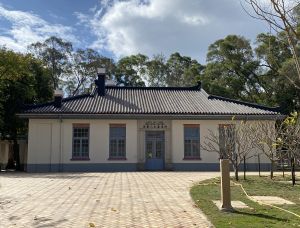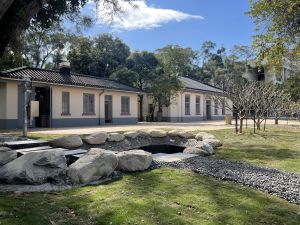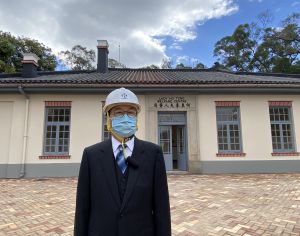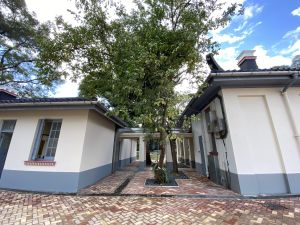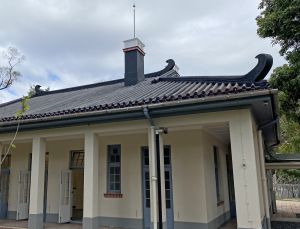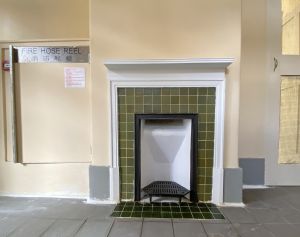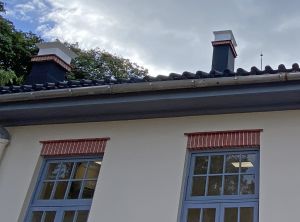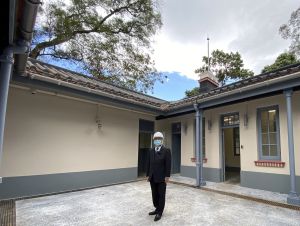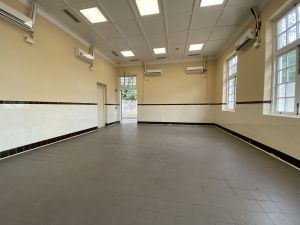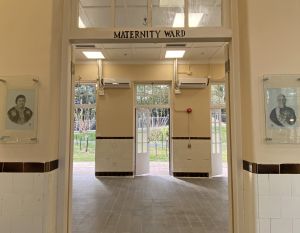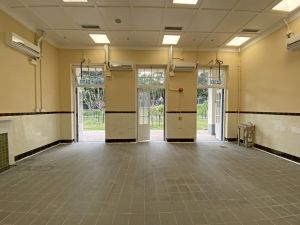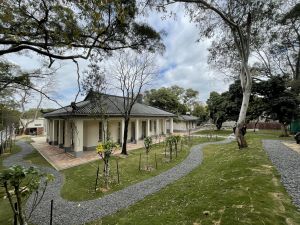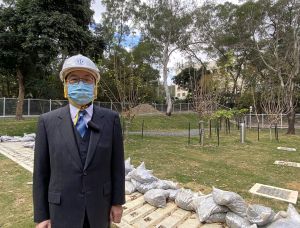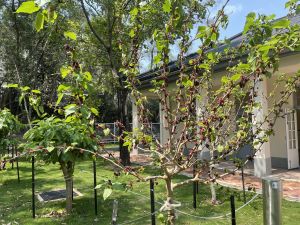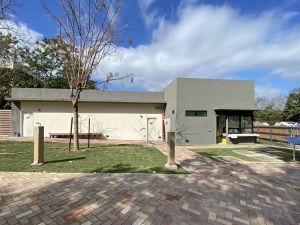Revitalising an old welfare centre into Eco-Learn Institute
|
To preserve our precious historic buildings, apart from retaining their architectural structures, we also need to revitalise them for public appreciation and use, so that they can acquire new social significance. Earlier I have introduced two projects under batch IV of the Revitalising Historic Buildings Through Partnership Scheme. This time, I will talk about the remaining project of similar significance – the revitalisation of the Lady Ho Tung Welfare Centre into the Lady Ho Tung Welfare Centre Eco-Learn Institute. I have also invited Vice Chairman of the Sik Sik Yuen, Mr CHAN Chant-fai, who is responsible for the revitalisation project, to share the details of the project. Originally one of the first rural clinics established in the New Territories The Lady Ho Tung Welfare Centre (LHTWC), located at No. 38 Kwu Tung Road, was constructed with donations from Sir Robert Ho Tung and named after his first wife MAK Sau-ying. The LHTWC was constructed in 1932 and completed in 1933. It was one of the first rural clinics established in the New Territories. From 1934 to 1973, it served mainly as a maternity centre and a sanatorium for Indian soldiers. It had also been a general out-patient clinic providing medical treatment and health education activities until 2005, and was accorded Grade 2 status by the Antiquities Advisory Board in December 2009. Revitalisation works to be completed in the middle of this year In June 2015, the Sik Sik Yuen was successfully selected to revitalise the LHTWC into the Lady Ho Tung Welfare Centre Eco-Learn Institute. According to Vice Chairman of the Sik Sik Yuen, Mr CHAN Chant-fai, the LHTWC is located in a green and shaded rural area in Kwu Tung and around Long Valley with rich biodiversity and special habitats, it is suitable for development into a local eco-discovery centre providing a series of community educational programmes on Bioblitz and experiential activities to promote awareness of ecological conservation and sustainable development among the new generation. With the revitalisation works of the LHTWC started in April 2019, the facility is expected to be completed for operation in the middle of this year. Combination of Chinese and Western architectural styles The LHTWC comprises two single-storey buildings, namely the Main Block and the Bungalow, connected by a covered walkway. Over the entrance to the Main Block is a stone plaque inscribed with the Chinese characters of Lady Ho Tung Welfare Centre (何東麥夫人醫局), while at the back of the Main Block is a colonnaded verandah. There is a courtyard in the middle of the Bungalow. Mr CHAN Chant-fai says that with a mixed Chinese and Western architectural style, the LHTWC combines Western Arts and Crafts features, such as the plastered walls and the plinth painted in grey, “cottage” type doors and windows, and red-brick trims below window hoods and window sills and on chimney stacks, with local vernacular features such as double-layered Chinese pan-and-roll tile pitched roofs and curling end ridges. Such buildings in the Chinese Eclectic style with Arts and Crafts features are very rare in Hong Kong. Trying their best to preserve the original appearance and features of the LHTWC According to Mr CHAN Chant-fai, to respect the original intention of the architectural design of the LHTWC, they will try their best to preserve the appearances, design, internal partitions of the buildings as well as the layout of the entire complex during the revitalisation process. After revitalisation, the Main Block will serve as ecology exhibition areas with the Eco Screen, Eco Lab and Ecologist’s Study Room. In the Eco Screen, there will be a large screen onto which ecological images are projected for introducing the current situation of local biodiversity. Microscopes and other laboratory equipment will be placed in the Eco Lab for students to conduct simple experiments. Photos, specimens, hand-drawn graphics and reference books on local species will be displayed in the Ecologist’s Study Room. Agriculture Microcosm Area There will be two exhibition areas in the Bungalow – the Welfare Centre Quarter Exhibition Room and “Kwu Tung Old Stories Exhibition Room” – to showcase the architectural features and revitalisation process of the LHTWC, and stories related to the LHTWC. The outdoor area will be designated as an agriculture microcosm area featuring an eco-pond, a Chinese medical herbs garden, an organic farm, etc. for student visitors to conduct ecological field trips. As Lady Ho Tung enjoyed silkworm rearing, mulberry trees will be grown in the area to commemorate her. The new one-storey annex block, which will house plant rooms and toilets, will be compatible with the existing buildings, so it will not affect visitors’ appreciation of the architectural features of the LHTWC. The revitalisation of the LHTWC is a very meaningful project. I hope that the public, apart from appreciating the distinctive architectural features of the LHTWC, will also have a better understanding of our natural ecology. Also, as mentioned in My Blog last week, a number of colleagues, experts, stakeholders and I have participated in the production of a television programme “Searching For Land”. Episodes 6 to 10 were broadcast last week to continue engaging the public to understand the land issue in Hong Kong. You are welcome to click on the DEVB’s webpage on Thematic Clips to re-visit these episodes. |
4 April, 2021
Back